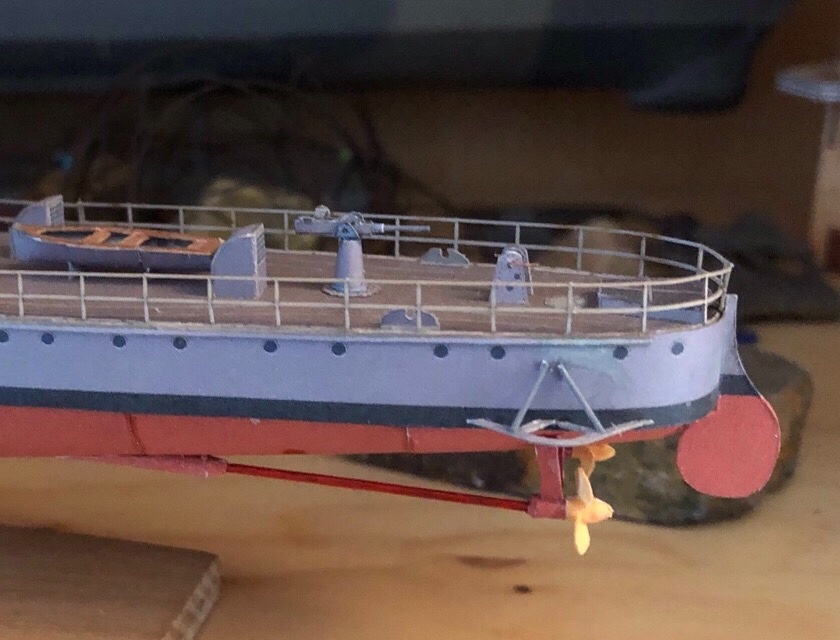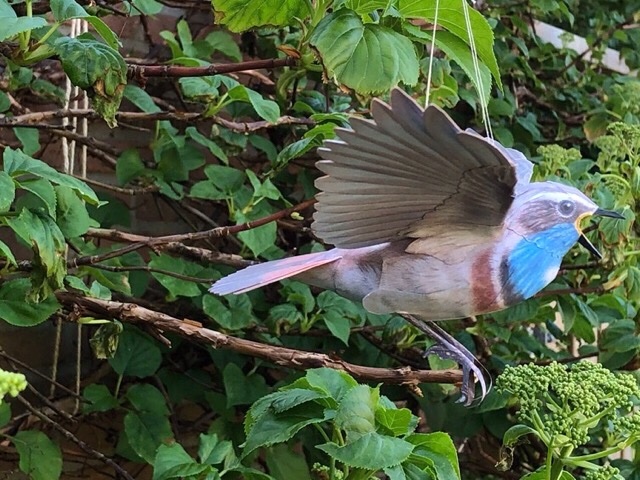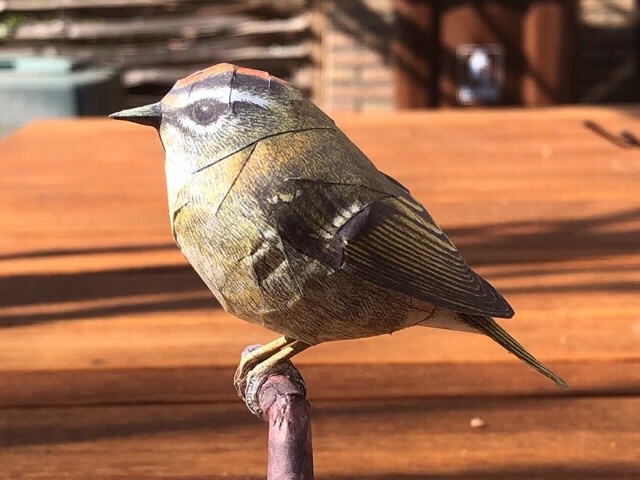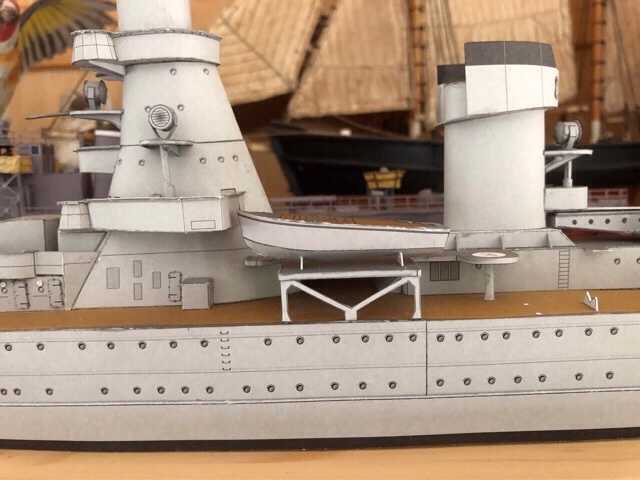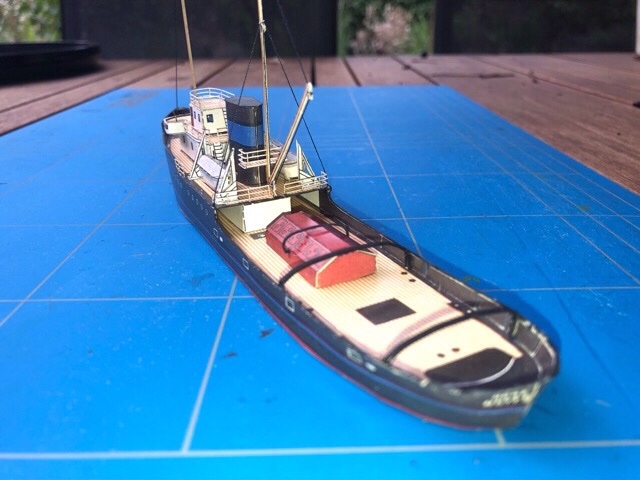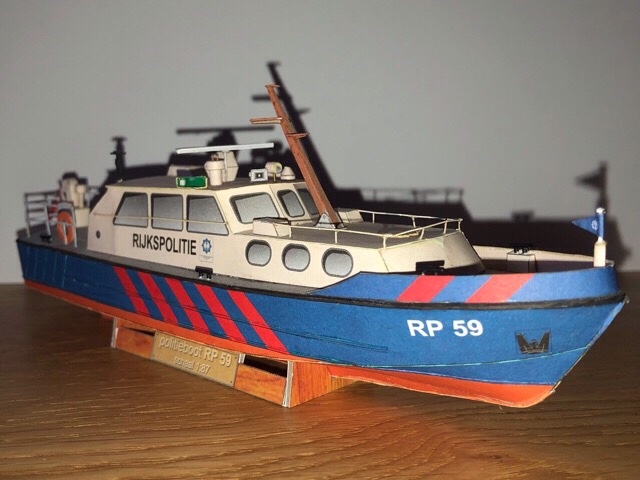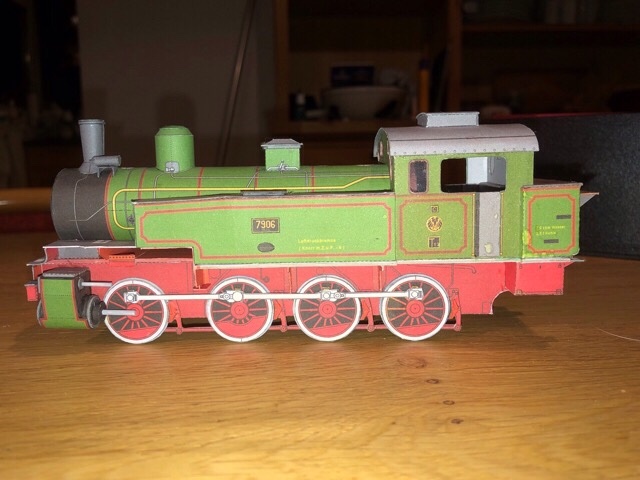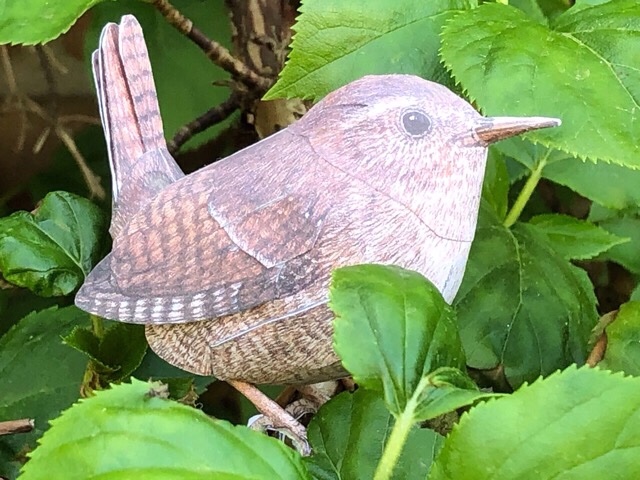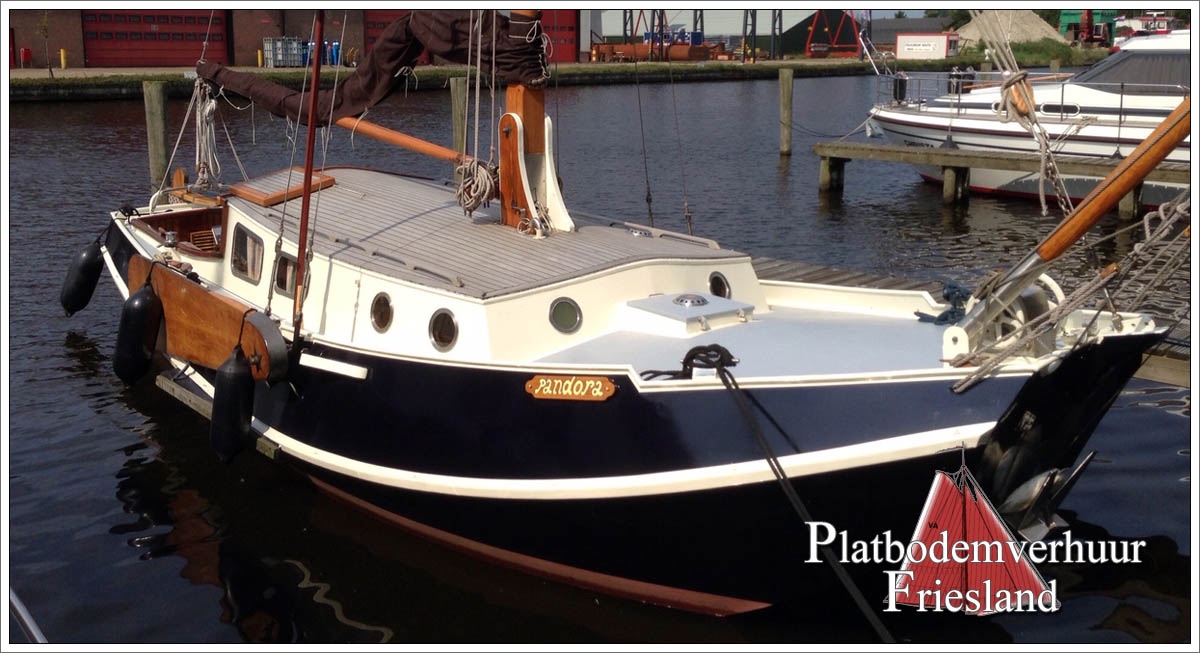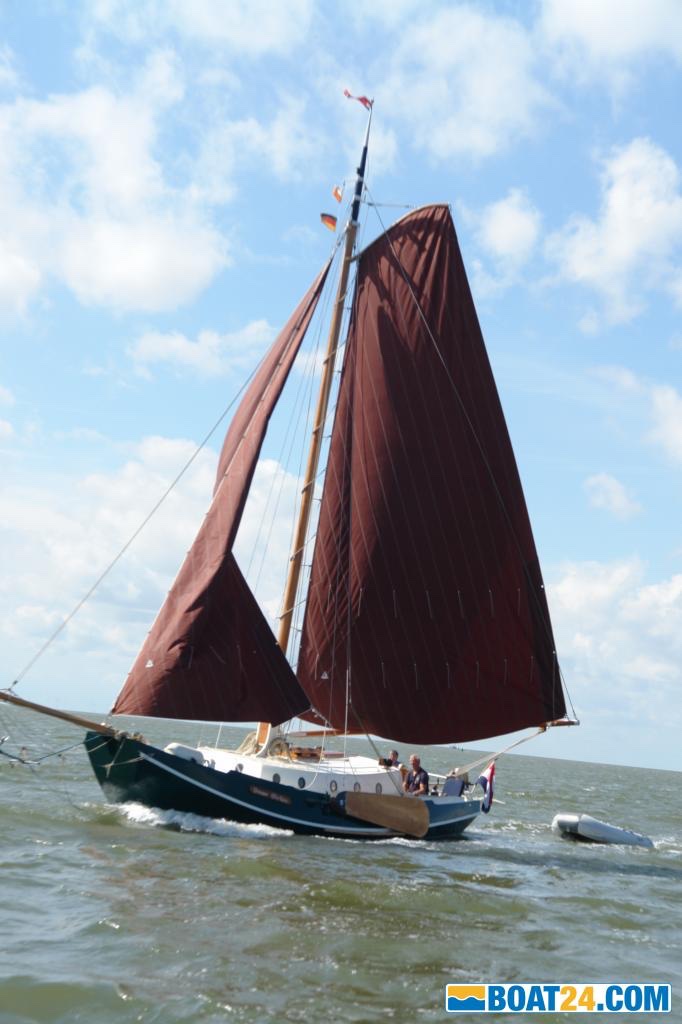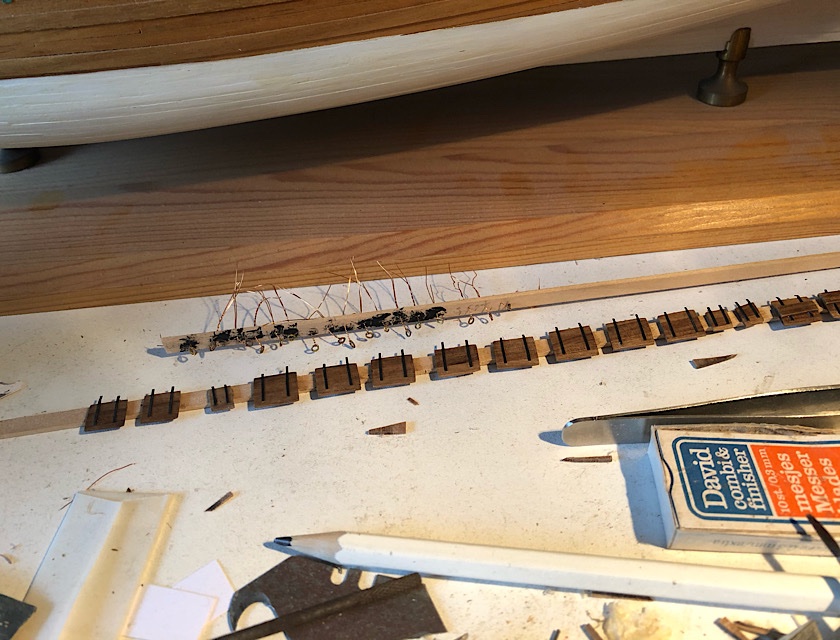-
Posts
3,529 -
Joined
-
Last visited
Content Type
Profiles
Forums
Gallery
Events
Everything posted by amateur
-

Help with keel layout .
amateur replied to LEGION 12's topic in Building, Framing, Planking and plating a ships hull and deck
I can’t help you, but adding a more ‘informative title’ to your post will probably attract a more knowledgeable builder to you question. Jan -
How did I miss the end ofthis journey? Congatulations on a very, very impressive model. Following your log has been a pleasure. Jan
-
Those birds are as good as your ships. I especially like the second one: just before getting the fish out of the water. Jan
-

Prins Willem 1650 by mhkash
amateur replied to mhkash's topic in - Build logs for subjects built 1501 - 1750
The size an number of the gratings is based on the contemporaneous model. So, why should you change? Gratings were used for all ships with a lower gundeck. Real warships had even gratings over the full length of the ship.Or do you mean the number of strips used for the gartings (the size of the holes. Than you should try to follow the rul that the size of the holws is slightly smaller than the with of a foot (ie around 10 cm). The museum-model has holes slightly wider than that, but not as wide as yours. Jan -

Prins Willem 1650 by mhkash
amateur replied to mhkash's topic in - Build logs for subjects built 1501 - 1750
Nothing wrong with the gratings: rather like the usual standard in 17th century dutch shipbuilding..... Jan -

Looking for plans or possible models of Magellan's ships.
amateur replied to J11's topic in Nautical/Naval History
Quite a lot of the nao-recontructions are influenced by models like this one, the Mataro-model (on display in the maritime museum in Rotterdam), supposed to represent a spanish nao of around 1450. (Pic from the museum website) (own pic) Jan -

Looking for plans or possible models of Magellan's ships.
amateur replied to J11's topic in Nautical/Naval History
Matthew ofBristol is perhaps more in the correcttime frame, or San Salvador (diego maritime): bit later than Magelhaes, but nice ship... Jan -

Looking for plans or possible models of Magellan's ships.
amateur replied to J11's topic in Nautical/Naval History
You are asking for something almost impossible: in thta period ships were not built accordi g to plans, butbased on main dimensions, experience and rules of thumb. There are some (but ot many) artists impressions ofships around that period, but those drawings, however interesting, are hardly usefull to reconstruct the ships of that period. No ships survived, and acheological evidence isvery scarce. In other words: historically accurate plans are not available. Your best line will be search for reconstructions ofspanish/portugese ships of that period. Quite a number of reconstructions of Columbus ships exist, there is a reconstruction of a Portugeseship (the pepper wreck) that can provide a starting point for your model, but that one is a bit too late. (1600 in stead of 1500) Jan -
The printing is superb. (Although I am still undecided whether I like the slighlymore clunky looks of the PE more than this almost perfect plastics) Question: what do you use for your rigging? it looks as if you have multiple sizes. Jan
-
Btw: in some of his vids, the robot shows up. Guess this black robot is also doing his ratling down
-
This guy is fantastic: both his modelling and his filming. He also does wonders with plastic: Jan
-
No, just too many things at the same time..... And as that is more or less a structural 'problem' these projects all go very, very slowly. All projects (card) that got some attention this summer: only the birds got finished 'in one go'. All others are extended projects Jan
- 139 replies
-
- corel
- prins willem
-
(and 1 more)
Tagged with:
-
If there is more to follow, I'll keep waiting Jan
-
No, that can'tbe correct. The mast should have and angle somewhere between the rake of the aft mast, and the main mast.i The masts are kind of fanning out: the forward mast vertical, or slightly raking forward, the main mast vertical or slightly backward, the mizzen masts raking aft, the rake increasing from main mast to aft mast. Jan
- 165 replies
-
- english galleon
- revell
-
(and 2 more)
Tagged with:
-
The rivetting of the secondary guns is somewhat too pronounced as far as I'm concerned. Less is more when it comes to these rows of rivets.... Jan
-
The last "official price" before Mamoli went out of business coupleof years ago was around €450,- Jan
-
Masthoops are not very common on dutch classic ships. Mostly rope with parrels. I don’t know hoe Billings does it, but the mastconstruction sounds rather like the original. Two wooden parts going through the deck to the keel. One iron bar sticking through these parts snd the mast. Jan
- 109 replies
-
- zeeschouw
- billing boats
-
(and 1 more)
Tagged with:
-
Wow, didn’t do anything for over a year. Didn’t realize that it was that long. Must be the longest (intime) more or less running buildlog in MSW. Anyway: did some work on the port-side gunport lids. See you all in oktober 2021 Jan
- 139 replies
-
- corel
- prins willem
-
(and 1 more)
Tagged with:
-
Trying to become an another 'armchair expert' (btw did not succeed so far), I spent some time looking at pics of this ship class. you already knew ofcourse, but these 'interbellum-designs' have beautiful lines. I also came across some drawings showing them in the 'old fashioned' white-yellow paint scheme. That would be a nice contrast: another of this class in another scheme. Or are those drawings just fantasy? Jan
About us
Modelshipworld - Advancing Ship Modeling through Research
SSL Secured
Your security is important for us so this Website is SSL-Secured
NRG Mailing Address
Nautical Research Guild
237 South Lincoln Street
Westmont IL, 60559-1917
Model Ship World ® and the MSW logo are Registered Trademarks, and belong to the Nautical Research Guild (United States Patent and Trademark Office: No. 6,929,264 & No. 6,929,274, registered Dec. 20, 2022)
Helpful Links
About the NRG
If you enjoy building ship models that are historically accurate as well as beautiful, then The Nautical Research Guild (NRG) is just right for you.
The Guild is a non-profit educational organization whose mission is to “Advance Ship Modeling Through Research”. We provide support to our members in their efforts to raise the quality of their model ships.
The Nautical Research Guild has published our world-renowned quarterly magazine, The Nautical Research Journal, since 1955. The pages of the Journal are full of articles by accomplished ship modelers who show you how they create those exquisite details on their models, and by maritime historians who show you the correct details to build. The Journal is available in both print and digital editions. Go to the NRG web site (www.thenrg.org) to download a complimentary digital copy of the Journal. The NRG also publishes plan sets, books and compilations of back issues of the Journal and the former Ships in Scale and Model Ship Builder magazines.




